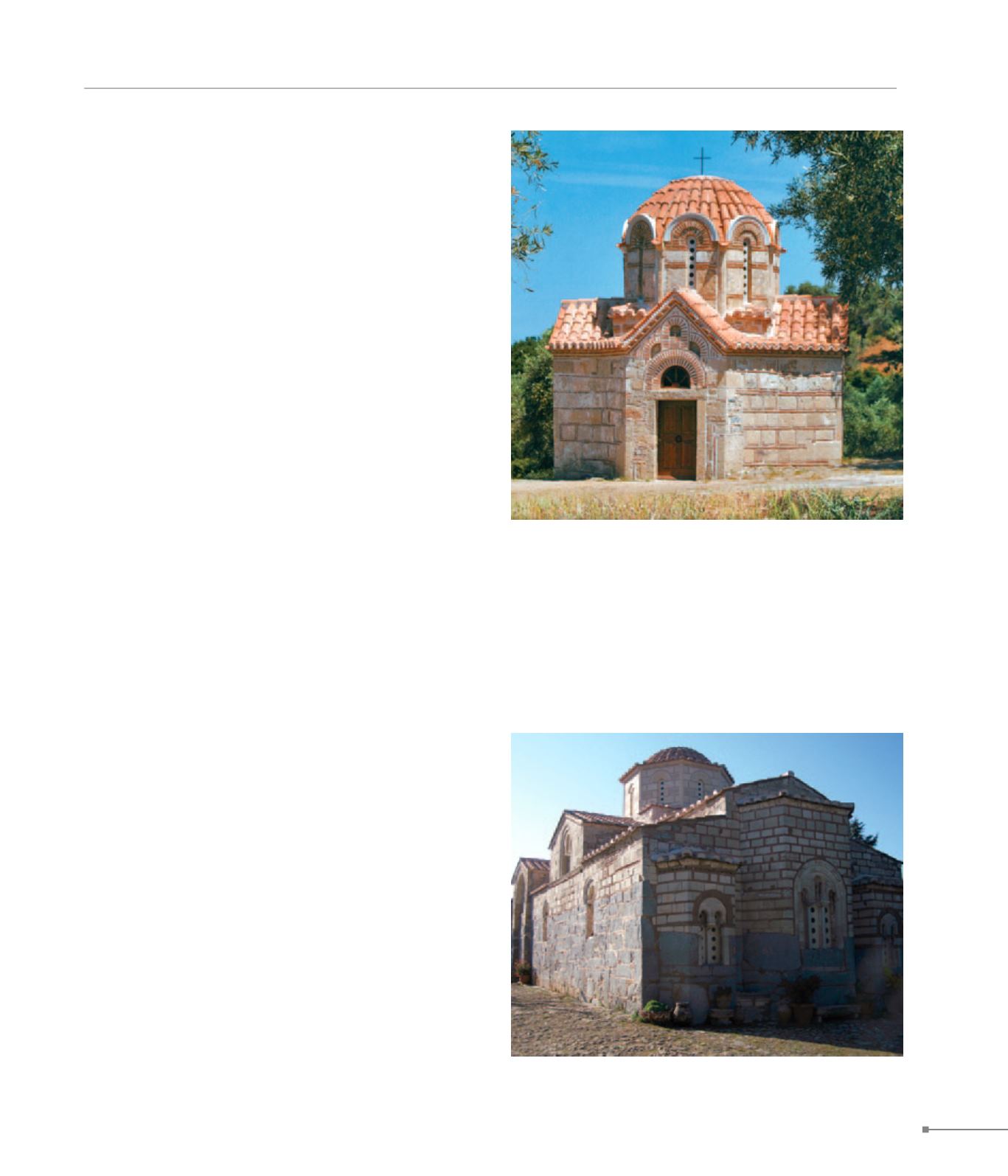
Loukisia.
Vathy. Aulis.
CENTRAL GREECE
185
225. Sagmata monastery, catholicon (Μονή Σαγματά, καθολικό)
223. Loukisia, Agios Georgios (Λουκίσια, Άγιος Γεώργιος)
223.
Loukisia.
In the Mid-Byzantine years, Anthedon was transferred inland,
along the slopes of Mount Messapion, near present-day Louk-
isia. Saint George, a small, aisleless, tetraconch church with
dome and refined cloisonné masonry (second half of 11th c.)
survives in Loukisia. Traces of wall-paintings of the 14th c. are
retained and around the church remnants of inhabitation dur-
ing the Byzantine period have been detected.
224.
Platanakia.
In the SW foothills of Mount Messapion (Mount Ktypas), 3 km
SE of Paralimni, on the site of the earlier church of Aghia Par-
askevi, the remains of a three-aisled basilica have been de-
tected. Early Christian spolia are incorporated in the modern
church. Ruins of the old metochion of the Sagmatas monas-
tery have been found near this site.
225.
Sagmatas Monastery.
The monastery lies on Mount Hypaton (Sagmation), an exten-
sion of Mount Messapion, at a site where the temple of Zeus
Hypatus once stood. In the medieval era inhabitation began
from the 11th c. The Pantokrator monastery (subsequently the
Metamorphosis of the Soter) was established in the first half of
the 12th c. The S section of the precinct, where the entrance
was initially, is the earliest. The catholicon is cross-in-square
with dome and four-columned lite (12th c.). The exonarthex
is an addition of the 12th-13th c. From the interior decoration
remain exquisite sculptures and floors with marble inlays.
226.
Vathy. Aulis.
This site is located on the Boeotian coast of the Euboean Gulf.
The sanctuary of Artemis with a temple and pottery workshops
was in use until the 4th c. A Byzantine settlement and a temple
near the ancient town, are mentioned in a description of the
war between the Genoese and the Venetians. From the late
14th c. the region belonged to the latter. The church of Saint
Nicholas is a combination of a cross-in-square with a triconch
church and dates from the early 11th c. Probably the church
referred to in sources on Venetian rule as “ecclesia S. Nicolai
de Catapharo”, it was destroyed before 1914 and reconstruct-
ed later. At the Mnema Kati site Late Roman and Byzantine
graves have been found.


